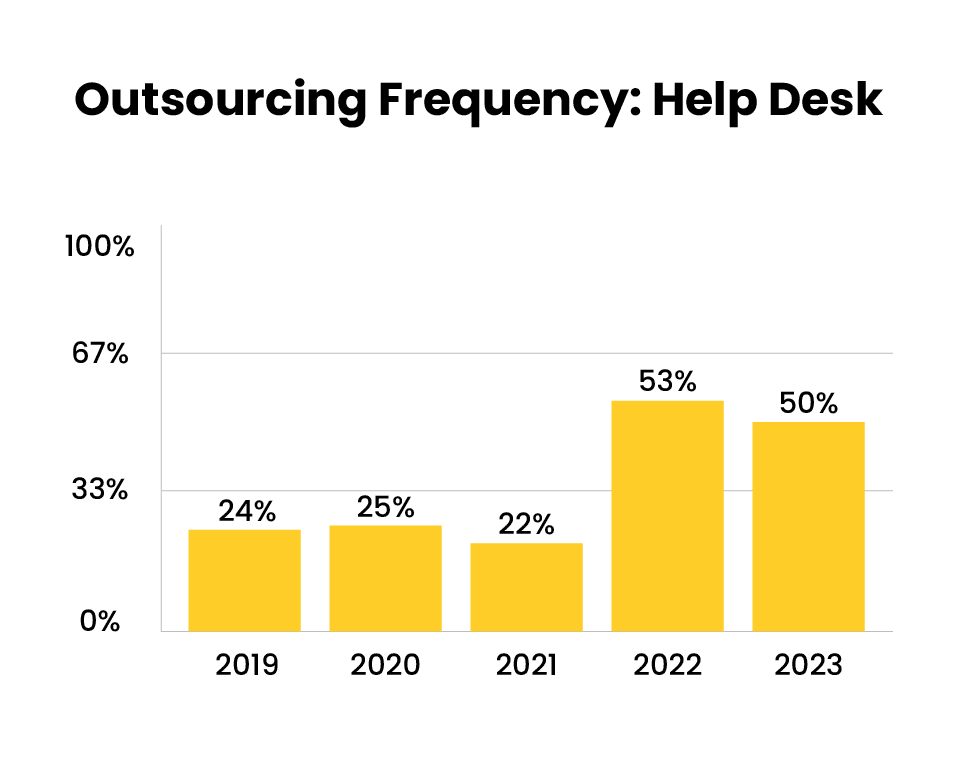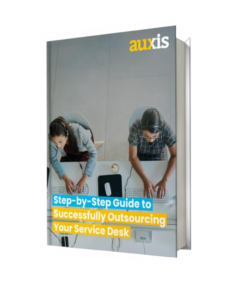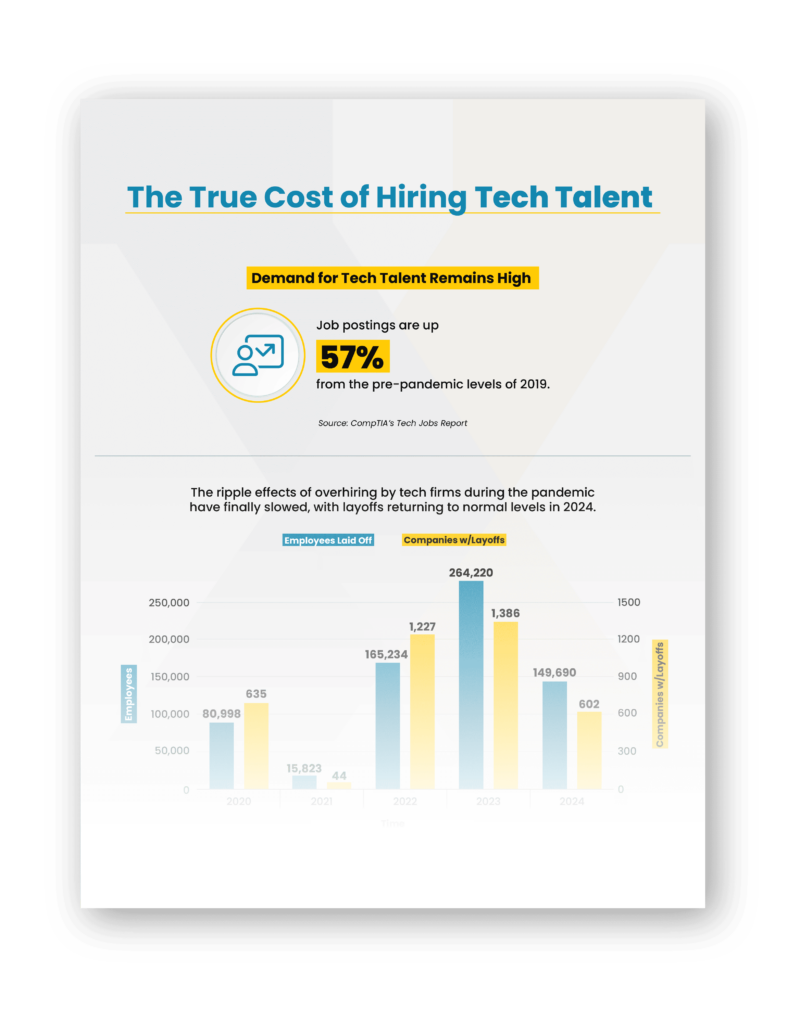In brief:
- A high-quality service desk is critical to making IT a business enablement function. IT labor shortages, upticks in ticket volumes, and high turnover rates are making it difficult to provide a high-performance service desk in-house.
- Outsourcing the IT service desk requires the right strategy and partner selection criteria to be successful.
- IT help desk best practices include creating a process-dependent, scalable service desk equipped with automation and analytics.
Providing a high-performing service desk is more important than ever as CIOs look to transform their IT organization into a business enablement powerhouse. The help desk is typically the face of the IT department for the entire organization, and as such, IT’s reputation depends on how end users perceive the quality of help desk services.
Yet, it is also becoming more difficult to get service desks right.
With service desk quality being such a high priority and concern for organizations, let’s examine the essential practices for what makes a good help desk. Let’s also explore why CIOs are increasingly turning to help desk outsourcing to achieve these goals – and what to look for in a top-quality outsourcing partner.
Why are high-performing help desks so hard to achieve?
The severe IT labor shortage over the last few years has left IT departments at most organizations stretched thin. Finding top tech talent remains a challenge for 90% of tech managers, with Help Desk Tier 1 agent ranking among the hottest tech jobs for the year, according to Robert Half’s 2024 Salary Guide.
At the same time, help desks and support teams are being inundated with a record number of requests. The widespread adoption of remote work, cloud technologies, and businesses accelerating digital transformation has led to a massive uptick in demand for tech support. The volume of support requests increased 30% in 2023 versus the year before, Randstad’s 2024 salary guide said, with help desks prioritizing speed rather than quality of service.
Not surprisingly, help desks in the U.S. are seeing high turnover rates, with a recent NICE WEM Global Survey estimating average attrition rates of 42%. This has left IT departments struggling to cope, even as the business demands faster issue resolution, reduced ticket volumes, less impact to user productivity, and lower costs.
As a result, help desk technician roles have seen significant salary increases in the past two years: 6.9% in 2022, and then another 4.8% in 2023, the Dice Tech Salary Report found.
Faced with these challenges, demand for help desk outsourcing is surging as CIOs look for new ways to deliver higher-quality proactive support faster and more cost-effectively. Global help desk outsourcing is expected to grow from $9 billion in 2023 to $17.4 billion in 2032.

Source: Computer Economics
Yet, without the right strategy and partner selection criteria, businesses can struggle to achieve the desired results from outsourcing help desk.
8 service desk best practices for providing exceptional customer support
Help desks typically carry many pain points that can sour the relationship between the business and IT department. The previously mentioned challenges plaguing help desks often force them to adopt a “break and fix” approach with poor and inconsistent service levels, high costs, inadequate service coverage, and limited documentation or metrics.
Outsourced or not, growing business needs demand a modern service desk with high performance.
Here are the key IT help desk best practices for ensuring a high-quality service desk and user satisfaction:
1. Clearly defined services mapped to business needs
Most organizations that are still running their help desk internally do not necessarily have a clear understanding of their business requirements when it comes to ticket volumes, hours of operation, and staffing levels.
Mapping services to business requirements helps define the scope and expectations for your service desk, minimizing the likelihood of disappointing end users. Defining the service desk functionalities required – such as scalability, improved service consistency, expanded coverage, and language skill – is key to accurately measuring service desk performance.
2. Process-dependent vs. people-dependent approach
With turnover being such a significant issue, help desks that rely on individual knowledge and performance will struggle if key help desk employees leave or even miss work for a few days. Process-dependent service desks reliably achieve exceptional performance by implementing repeatable processes anyone can follow.
3. Robust and searchable knowledge base
Help desks cannot adequately support end users without proper documentation. Knowledge management software organizes institutional knowledge into a searchable database. The best tools also use automation and machine learning to automatically put relevant resources at the fingertips of agents, as well as end users in self-service portals.
4. Workflow automation in core help desk processes
Automated workflows reduce time spent managing tickets, enabling help desks to respond faster and more precisely to customer inquiries . They also reduce human errors and free up staff to focus on challenging topics where a real agent’s support is needed.

5. Automation to increase self-service and automated ticket resolution
High-performance service desks provide automation capabilities that can significantly reduce the number of tickets created by enabling self-service by users. That includes self-service options like chatbots, knowledge base integration that provides users with self-help resources, and more.
Leveraging bots for resolving ticket types such as password resets can help companies solve 80% of tickets in the first interaction (Freshservice IT Service Management Benchmark Report 2023). Bots also help provide quick resolutions to recurring IT requests, while independently resolving nearly half (46%) of tickets raised.
6. Continuous improvement mindset with strong performance metrics and proactive problem management
Tracking key performance indicators like average call abandonment rates, response times, and satisfaction scores helps to continuously improve efficiency and quality, while also helping to reduce response times by an average of 16% (2023 Zendesk report). Metrics further reveal trends that enable your help desk team to proactively identify, resolve, and prevent problems before they impact the business.
7. Consumption-based pricing model
High-performance service desks have a clear understanding of their cost to operate and how this cost scales up or down as their workloads evolve. Therefore, understanding your cost per ticket or per user is key to monitoring the performance of your organization and making decisions that can improve or impact service quality.
8. Flexible staffing model to deal with business cycles
Staying “right-sized” with a help desk that easily scales up and down as needs change makes your organization more flexible, cushions economic volatility, and enables you to easily absorb situations that might temporarily increase ticket volumes like adoption of a new technology.
Considering help desk outsourcing? Make sure to look for these attributes in your selected support team
If you are one of the many organizations looking to outsource help desk to ensure service quality, less volatility, and greater efficiencies, make sure to evaluate your ideal partner beyond just pricing. Even though this advice sounds obvious, it is a common mistake that we see many organizations make when evaluating outsourcing.
Some key attributes to seek in your outsourcing partner include:
- Proven automation and innovation capabilities.
- Good cultural fit and willingness to be flexible and adapt to your changing business needs.
- Excellent talent management practices with strong recruiting filters and retention focus.
- Strong service level agreements and ability to report key performance metrics in real time to measure the success of your relationship.
- Above all, look for a partner that is obsessed with improving the end-user experience and is willing to move beyond SLAs to XLAs (Experience-Level Agreements), measuring performance based on what is most important to the end user.
For more practical tips on what to look for in your outsourcing partner, check out our article “Selecting the Right Help Desk Outsourcing Partner” or download our Step-By-Step Guide to Successfully Outsourcing your Help Desk.
Want to learn more about how service desk outsourcing can support your business needs? Schedule a consultation with our help desk leaders today! Or visit our resource center to learn more help desk trends, strategies, and success stories.




